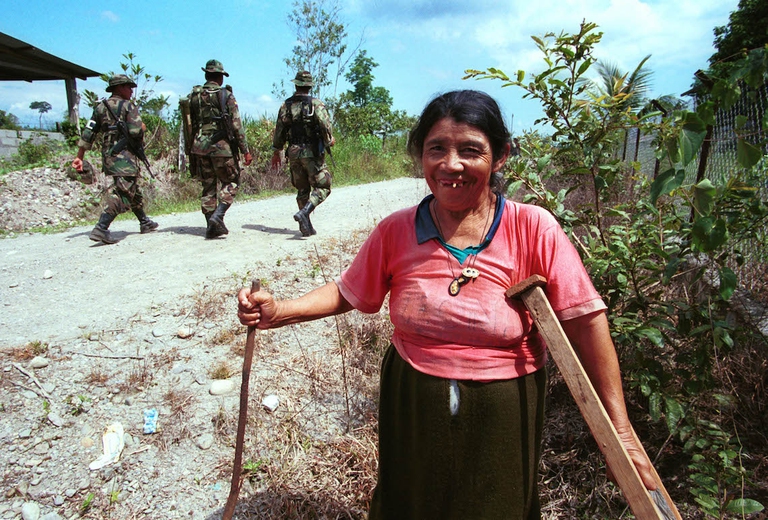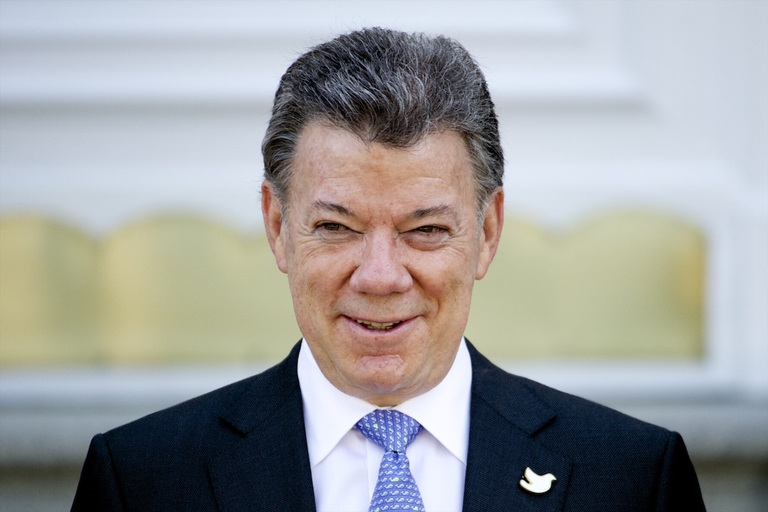
A special report from the Yuqui territory delves deep into the dreams, challenges, joys and sadness of one of Bolivia’s most vulnerable indigenous groups.
Six million people had to abandon their lands because of of a 50-year internal war between the military and Revolutionary Armed Forces of Colombia (Farc), the country’s largest left-wing rebel group. Over 260,000 people lost their lives during this period and thousands were kidnapped or disappeared, estimates human rights organisation Amnesty International in a report
Six million people had to abandon their lands because of of a 50-year internal war between the military and Revolutionary Armed Forces of Colombia (Farc), the country’s largest left-wing rebel group. Over 260,000 people lost their lives during this period and thousands were kidnapped or disappeared, estimates human rights organisation Amnesty International in a report released in November. Poverty, violence and human rights violations, reinforced during years of conflict, cannot be resolved without a proper agrarian reform, the group argues.
In 2011 the government implemented the Victims and Land Restitution Law (La Ley de Víctimas y Restitución de Tierra) with the objective of returning lands deprived because of the conflict to their former owners. Building this legal framework is a positive step on the path towards more robust land rights, a form of official recognition that there is a need to change the land ownership structure in Colombia. However, this law doesn’t mention indigenous and Afro-descendant communities directly. Whilst these groups respectively make up almost 3% and up to 25% of the country’s population, almost a third of the indigenous population is excluded from land titles and less than 5% of Afro-descendant Colombians hold collective property rights.
There have only been two successful cases of land restitution to indigenous and Afro-descendant communities. One concerns Alto Andágueda, an indigenous reservation in the northwest of the country, targeted by several mining companies seeking to exploit its resources. It has also been the subject of bombings and attacks on its population that have forced thousands to flee, both during the armed conflict as well as after the peace talks between the government of Juan Manuel Santos and the Farc began in 2012. A court suspended concessions for mining companies in 2013, and a year later ruled in favour of restitution of land titles to indigenous people – for the first time in Colombian history. Even the case of Alto Andágueda, considered to be a success story, opens space for discussion on the gap between legal regulations and implementation: the alleged achievements are overshadowed by the sad reality that both illegal mining and attacks on indigenous people have continued in the area.
Restitution of land is a challenging yet crucial element for democracy in the country. By denying the land rights of indigenous Colombians and Afro-descendant communities, the government violates international obligations and puts the peace accords in danger. The right to land is a basic human right and neglecting its importance may affect the future of the whole country.
Siamo anche su WhatsApp. Segui il canale ufficiale LifeGate per restare aggiornata, aggiornato sulle ultime notizie e sulle nostre attività.
![]()
Quest'opera è distribuita con Licenza Creative Commons Attribuzione - Non commerciale - Non opere derivate 4.0 Internazionale.
A special report from the Yuqui territory delves deep into the dreams, challenges, joys and sadness of one of Bolivia’s most vulnerable indigenous groups.
The Yuqui people of the Bolivian Amazon fight not only to survive in the face of settlers, logging and Covid-19, but to preserve their culture and identity.
Jair Bolsonaro is accused of crimes against humanity for persecuting indigenous Brazilians and destroying the Amazon. We speak to William Bourdon and Charly Salkazanov, the lawyers bringing the case before the ICC.
Activists hail the decision not to hold the 2023 World Anthropology Congress at a controversial Indian school for tribal children as originally planned.
Autumn Peltier is a water defender who began her fight for indigenous Canadians’ right to clean drinking water when she was only eight years old.
The pandemic threatens some of the world’s most endangered indigenous peoples, such as the Great Andamanese of the Andaman and Nicobar Islands in India.
The Upopoy National Ainu Museum has finally opened. With it the indigenous people of Hokkaido are gaining recognition but not access to fundamental rights.
A video shows the violent arrest of indigenous Chief Allan Adam, who was beaten by two Royal Canadian Mounted Police (RCMP) officers.









